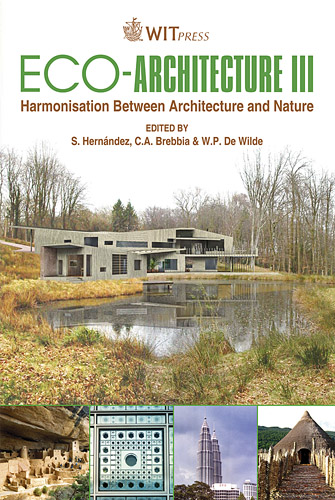An Open System Model Of Ecological Architecture
Price
Free (open access)
Transaction
Volume
128
Pages
12
Page Range
49 - 60
Published
2010
Size
420 kb
Paper DOI
10.2495/ARC100051
Copyright
WIT Press
Author(s)
Y. Gu & R. Evans
Abstract
This paper presents a model of open systems evolution as a paradigm for ecological design in architecture. Based on evolutionary thermodynamics and complex systems science, the model of open systems evolution is constituted by the mechanisms of the adaptation of open systems to the host environment via natural gradients, the self-organization of open systems so as to optimize resource distributions according to the maximum entropy principle, the generation of diversity and the production of minimal entropy in the host environment. According to this model, the authors propose a conceptual framework for ecological architecture that describes the ecological interactions of buildings with the natural environment in open thermodynamic terms, and actively engages the end-users in buildings into the micro-climate control. In the manner of open systems evolution, these multiple interactions evolve to optimize the environmental performance of buildings, resulting in a sustainable symbiosis of architecture and nature. Keywords: open systems evolution, ecological architecture, intelligent design. 1 Introduction Induced by human activities, including industrial development and production, urbanisation and agriculture over the last two centuries, global warming and climate change are recognised as an entropic consequence of environmental depletion (Ingersoll [7]; Moore [13]). The environmental crisis has been and will continue to be a serious threat to basic social well-being and global stability, presenting the world with a major dilemma and challenge of achieving
Keywords
open systems evolution, ecological architecture, intelligent design





